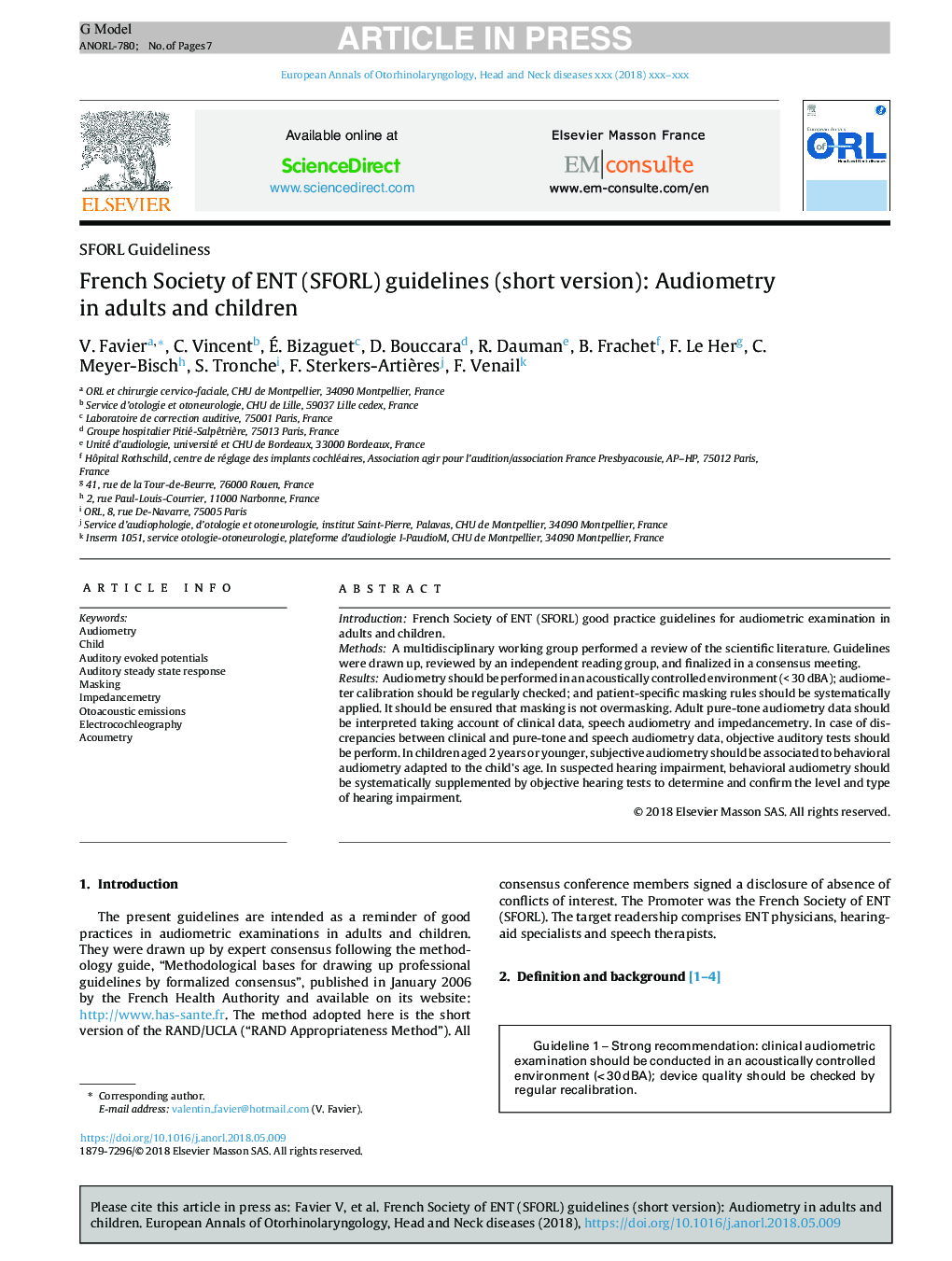| Article ID | Journal | Published Year | Pages | File Type |
|---|---|---|---|---|
| 10221789 | European Annals of Otorhinolaryngology, Head and Neck Diseases | 2018 | 7 Pages |
Abstract
Audiometry should be performed in an acoustically controlled environment (<Â 30Â dBA); audiometer calibration should be regularly checked; and patient-specific masking rules should be systematically applied. It should be ensured that masking is not overmasking. Adult pure-tone audiometry data should be interpreted taking account of clinical data, speech audiometry and impedancemetry. In case of discrepancies between clinical and pure-tone and speech audiometry data, objective auditory tests should be perform. In children aged 2 years or younger, subjective audiometry should be associated to behavioral audiometry adapted to the child's age. In suspected hearing impairment, behavioral audiometry should be systematically supplemented by objective hearing tests to determine and confirm the level and type of hearing impairment.
Keywords
Related Topics
Health Sciences
Medicine and Dentistry
Otorhinolaryngology and Facial Plastic Surgery
Authors
V. Favier, C. Vincent, Ã. Bizaguet, D. Bouccara, R. Dauman, B. Frachet, F. Le Her, C. Meyer-Bisch, S. Tronche, F. Sterkers-Artières, F. Venail,
